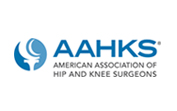Periacetabular Osteotomy (PAO)
Periacetabular osteotomy is a surgical procedure indicated for the treatment of specific hip disorders including hip dysplasia. With this procedure, the bones around the socket (the acetabulum) are cut to allow the socket to be reoriented into a better position. Dr. Duncan and his team can also surgically correct and treat problems in the hip including labral tears and excess bone on the femur.
Why Would Periacetabular Osteotomy Be Performed?
Periacetabular Osteotomy can be used to surgically treat congenital or developmental deformity of the acetabulum known as dysplasia. If this condition remains untreated, secondary arthritis eventually develops. Therefore, in order to relieve symptoms and improve the prognosis of the hip, this surgery is done to correct the bony anatomy and help normalize the load across the joint.
How is the surgery performed?
Periacetabular osteotomy is performed with the patient lying on his/her back so that we can have access to the affected hip. If a hip arthroscopy is needed to evaluate the condition of the cartilage or repair a torn labrum, this will be performed first through two small incisions in the front of the hip. Acetabular labral tears can be repaired with “suture anchors.” These devices are anchored in the bone of the hip socket and the attached suture is used to refix the torn labrum. In cases of femoroacetabular impingement, abnormal bone protrusions can be removed with a burr. These bony protrusions may occur along the femoral head/neck region. If the articular cartilage in the joint has been lost, small holes may be drilled into flat, bony areas of the hip. This procedure, “microfracture,” encourages the formation of new “repair cartilage” in the area of cartilage loss.
Then, we will make an incision along the front of the hip near the groin. The muscles around the hip socket will be retracted to gain access to the bones around the acetabulum. Using specialized osteotomes (sharp metal blades), the bones around the hip socket (pubis, ischium, and ilium) will be cut while staying out of the hip joint itself. Once these cuts have been completed and connected, the acetabulum will be free to be reoriented into a better position. This new position of the socket will be help temporarily in place with wires. The correction will be checked with x-ray. If the correction appears to be at the desired position, these wires are exchanged for screws that will hold the acetabulum in position until the cut bones ends have a chance to heal. The skin is then closed over drains to prevent fluid from collecting near the hip joint.
What Can I Expect from Periacetabular Osteotomy?
Every patient is unique, and the details of periacetabular osteotomy procedures can vary. In general, periacetabular osteotomy is performed under general anesthesia. You will be asleep during the procedure and you will not remember your surgery.
The length of the procedure largely depends upon the type of procedure being performed (does a hip arthroscopy need to be performed as well?). Most procedures last four to six hours. Periacetabular osteotomy is performed on an inpatient basis with a 2-3 day stay in in the hospital.
What Can I Expect in Recovery from Periacetabular Osteotomy?
After periacetabular osteotomy, you will be on crutches for four weeks, placing 20 pounds of weight down on your operative leg. You will be given oral pain medicines to manage the surgical discomfort. Physical therapy will start immediately after surgery with crutch training, gentle range-of-motion and active exercises. A CPM (continuous passive motion) machine will be used for one month to restore motion to the hip and help healing of the joint.
Dr. Duncan will outline a progressive physical therapy program for you to rebuild strength in the muscles around the hip joint. Most patients require 12 weeks of physical therapy to restore strength and mobility in the hip, but every patient is unique. In six weeks to two months, you should be able to resume most of your normal, everyday activities. However, it may take three to four months for the hip to fully recover from surgery. In many cases, the hip continues to improve for 12 to 18 months after surgery. Return to full sport activity is usually four months after the procedure.
Following periacetabular osteotomy, it is very important to maintain your schedule of routine appointments with Dr. Duncan and his team so they he can monitor your progress after surgery.
Who is a Candidate for Periacetabular Osteotomy?
Periacetabular Osteotomy is generally performed on patients who are physically active, have hip pain, and a hip disorder that has not gone onto end-stage osteoarthritis that would otherwise be best treated with a total hip replacement. This usually involves patients with a history of hip dysplasia, Perthes, congenital disorders, or retroverted acetabular sockets.
What are the Risks and Benefits of Periacetabular Osteotomy?
All surgical procedures carry some risks. In general, periacetabular osteotomy is safe and the major complication rate is low. Potential complications include but are not limited to infection, blood clots, nerve damage to the femoral or sciatic nerve, bleeding, fracture, continued pain, heterotopic bone formation, nonunion of the bone cuts, scar tissue formation, instrument breakage, and anesthesia problems.
For those who are appropriate candidates for periacetabular osteotomy, it may avoid or postpone the need to undergo total hip replacement. In some cases, periacetabular osteotomy may fully address a hip problem with no need for further surgery.
If you cannot access the forms you can click on the icon to download the software.

Hip Preservation Services
- Hip Arthroscopy
- Surgical Hip Dislocation
- Periacetabular Osteotomy (PAO)
- Proximal Femoral Osteotomy (PFO)
- Core Decompression with Autologous Bone Marrow Aspirate Injection
- Gluteus Medius Tendon Repair/Reconstruction
- Proximal Hamstring Tendon Repair/Reconstruction
- Trochanteric Bursectomy
- Sports Hernia Repair






